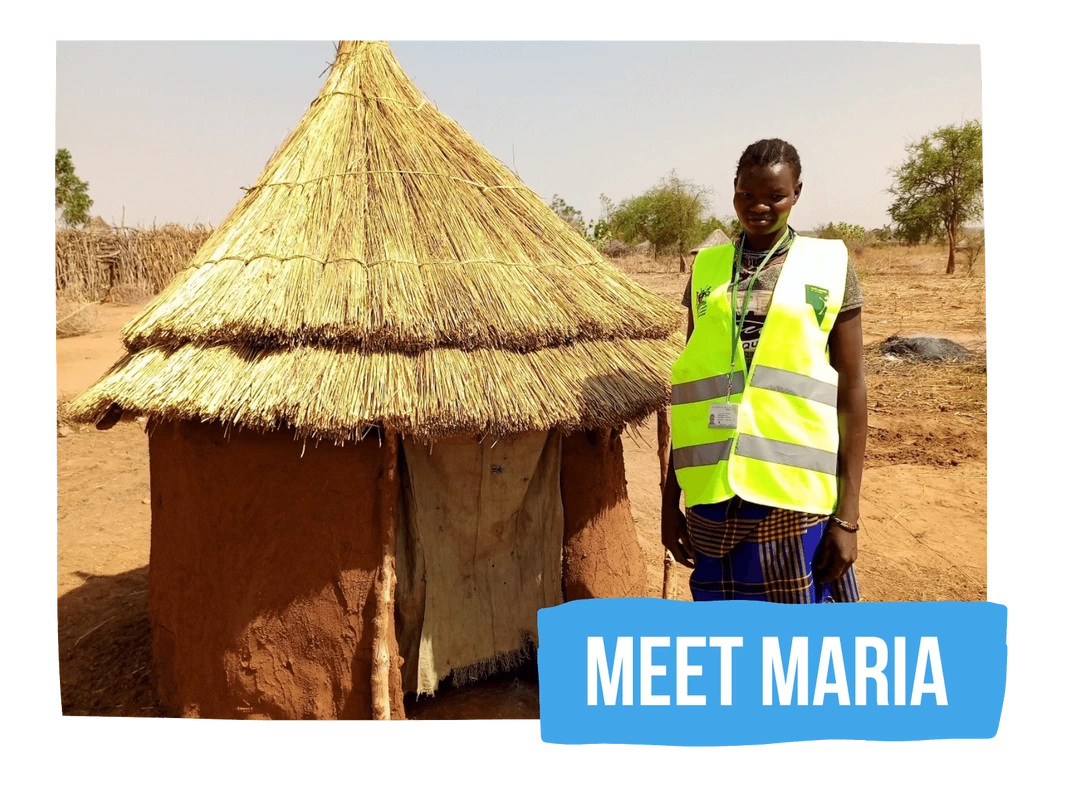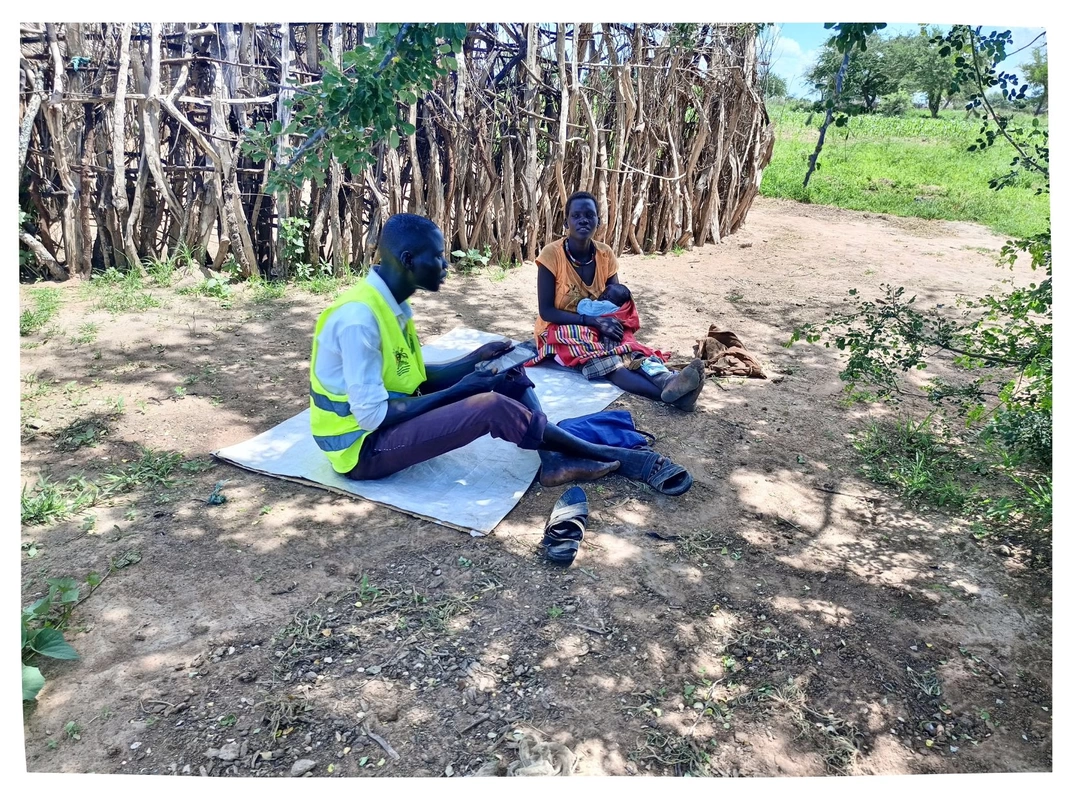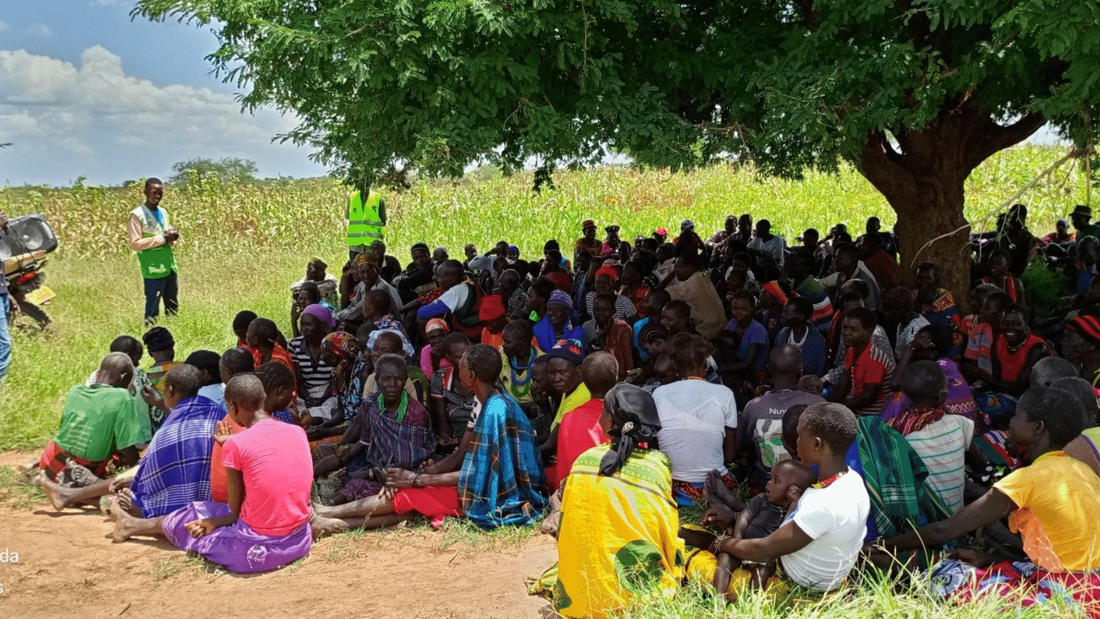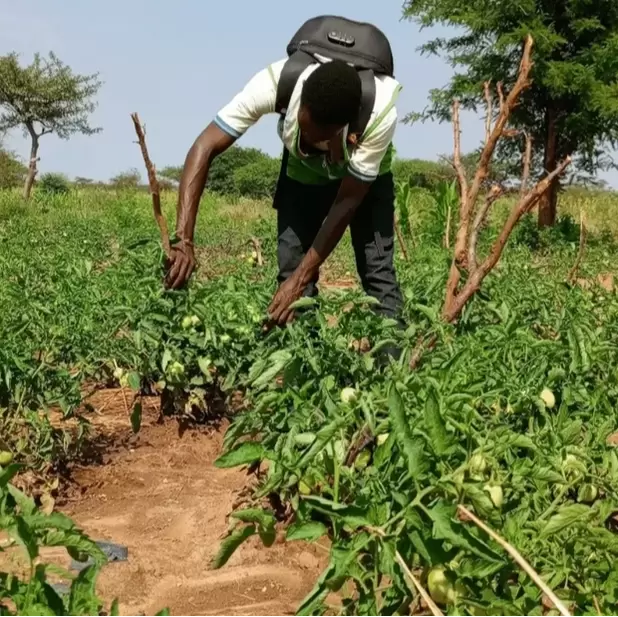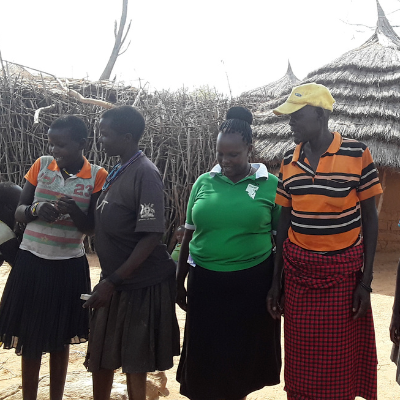Endemic poverty in the Karamoja region of north eastern Uganda puts children at risk of abuse, trafficking, neglect and exploitation.
Children on the Edge work with communities in the Napak district of Karamoja to create protective environments for their children; transforming them into safe spaces where children are protected from harm and are able to thrive.
|
26-year-old MARIA is a mother of two. She earns a living by doing gardening work to provide food for her family. When a new Child Protection Team was set up in her area, she volunteered and was elected by her local community to join the team. Maria is a committed and active member of her the Team, who lead by example to help make the community safer for the children who live there.
After taking part in training about health, sanitation and the importance of latrines, Maria decided to dig a pit latrine at her home by herself. This impressed her neighbours so much that they began to follow suit. Maria’s actions were the turning point for the community, who have since dug over 50 pit latrines, with more in progress. |

‘’ CHILDREN ON THE EDGE HAS TAUGHT US TO BE INDEPENDENT AND DO EVERYTHING BY OURSELVES INSTEAD OF WAITING TO BE GIVEN HANDOUTS BY THE GOVERNMENT AND OTHER NGO'S.
I HAVE GAINED SELF-ESTEEM AND CONFIDENCE IN MYSELF AND WHENEVER I LOOK AT THE LATRINE I BUILT MYSELF, I BECOME OVERJOYED. NOW I BELIEVE THAT I CAN DO MORE ‘’
Maria - Child Protection Team Member
I HAVE GAINED SELF-ESTEEM AND CONFIDENCE IN MYSELF AND WHENEVER I LOOK AT THE LATRINE I BUILT MYSELF, I BECOME OVERJOYED. NOW I BELIEVE THAT I CAN DO MORE ‘’
Maria - Child Protection Team Member
WORKING ON 'THE EDGE' IN KARAMOJA, UGANDA
|
|
WHAT WE DO TO HELP
We work closely with Children on the Edge Africa, our sister organisation, to support communities in the Napak area of Karamoja, using our Child Protection Team Model. We work with community members to help them transform their areas and make them safer for their children, creating a protective environment where children can safely live, play, learn and grow.
We began working in Karamoja in 2022 by building relationships with the community, including teachers and local leaders in each of the six parishes of Lopoko sub county, and supporting them to elect and establish six Child Protection Teams of around 10 people each, made up of representatives from 39 villages. We also established a Child Protection Committee (CPC) formed of a representative from each parish.
Voluntary Child Protection Teams work with community members and families to keep children safe from harm. The Child Protection Teams receive training and support from Children on the Edge Africa, and work closely with their communities to change mindsets and ensure that children are better protected.
Using their training, they hold workshops for hundreds of community members each month on topics like child trafficking, hygiene and sanitation, positive parenting and child labour. They encourage parents to send their children to school and report any cases of child abuse that they come across.
Levels of sanitation in the communities in Lopoko have vastly improved thanks to Child Protection Team training, with communities now conducting weekly community cleans. The Teams have also been organising workshops to share the harms of open defecation. As a result over 400 pit latrines have been built.
We began working in Karamoja in 2022 by building relationships with the community, including teachers and local leaders in each of the six parishes of Lopoko sub county, and supporting them to elect and establish six Child Protection Teams of around 10 people each, made up of representatives from 39 villages. We also established a Child Protection Committee (CPC) formed of a representative from each parish.
Voluntary Child Protection Teams work with community members and families to keep children safe from harm. The Child Protection Teams receive training and support from Children on the Edge Africa, and work closely with their communities to change mindsets and ensure that children are better protected.
Using their training, they hold workshops for hundreds of community members each month on topics like child trafficking, hygiene and sanitation, positive parenting and child labour. They encourage parents to send their children to school and report any cases of child abuse that they come across.
Levels of sanitation in the communities in Lopoko have vastly improved thanks to Child Protection Team training, with communities now conducting weekly community cleans. The Teams have also been organising workshops to share the harms of open defecation. As a result over 400 pit latrines have been built.
WHY ARE CHILD PROTECTION TEAMS SO EFFECTIVE?
Child Protection Teams are made up of local volunteers, men and women, elected by their communities, who understand the problems that need to be tackled. They receive training on child protection and child rights, how to deal with emerging community issues and serve as a voice for the children. They are supported to uphold children’s rights and tackle child abuse and neglect.
Their regular physical presence in the community acts as a deterrent for crimes including child trafficking and, because they are trained to intervene and advise in situations where children are at risk, communities see a reduction in child abuse, child sacrifice and child labour.
The Teams become ambassadors for the welfare of children and their communities look to them for support and advice. The Child Protection Teams build better relationships between communities and the police, meaning more crimes are reported and dealt with effectively.
Team members work with the community by facilitating workshops on a range of children's issues and social problems, to change mindsets and culture. Here, families learn how to care for their children and make their homes safer, so we see a reduction in domestic violence and abuse. Parents become more aware of the risks to their children and why it’s important to keep them safe.
Their regular physical presence in the community acts as a deterrent for crimes including child trafficking and, because they are trained to intervene and advise in situations where children are at risk, communities see a reduction in child abuse, child sacrifice and child labour.
The Teams become ambassadors for the welfare of children and their communities look to them for support and advice. The Child Protection Teams build better relationships between communities and the police, meaning more crimes are reported and dealt with effectively.
Team members work with the community by facilitating workshops on a range of children's issues and social problems, to change mindsets and culture. Here, families learn how to care for their children and make their homes safer, so we see a reduction in domestic violence and abuse. Parents become more aware of the risks to their children and why it’s important to keep them safe.
YOU CAN MAKE A DIFFERENCE.Help communities to create safer environments for their children by supporting people like Maria.
By donating today, you will directly help our Child Protection Teams in Karamoja to transform their communities. |
As a small charity, with a big reach we are grateful for every penny we receive, and are committed to spending your donation where the need is greatest. For every pound spent by Children on the Edge, 89p goes directly to our international programmes.
YOU MIGHT LIKE
|
READ HOW NEW GARDENS ARE PROVIDING FOOD AND BRINGING HOPE TO COMMUNITIES IN KARAMOJA
|
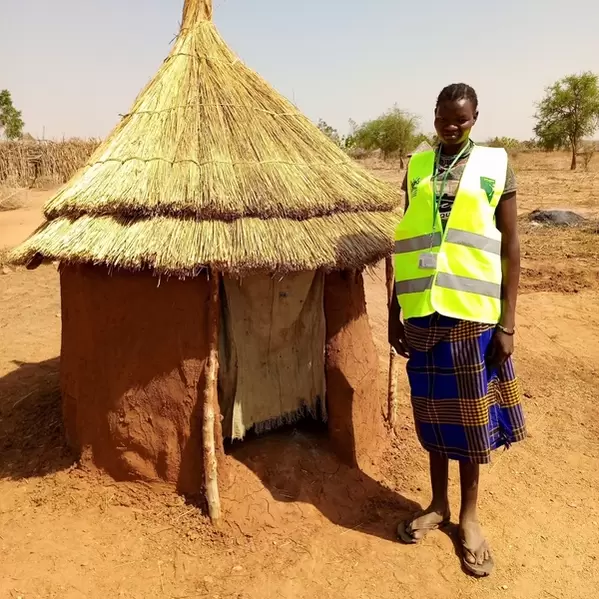
MEET MARIA THE CHILD PROTECTION TEAM MEMBER INSPIRING HER COMMUNITY TO BUILD LATRINES
|
READ HOW WE LAUNCHED NEW CHILD PROTECTION TEAMS IN KARAMOJA IN 2022
|



